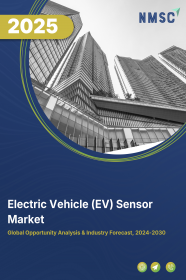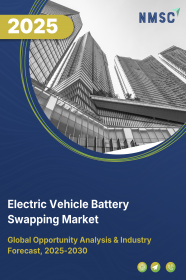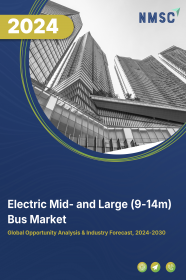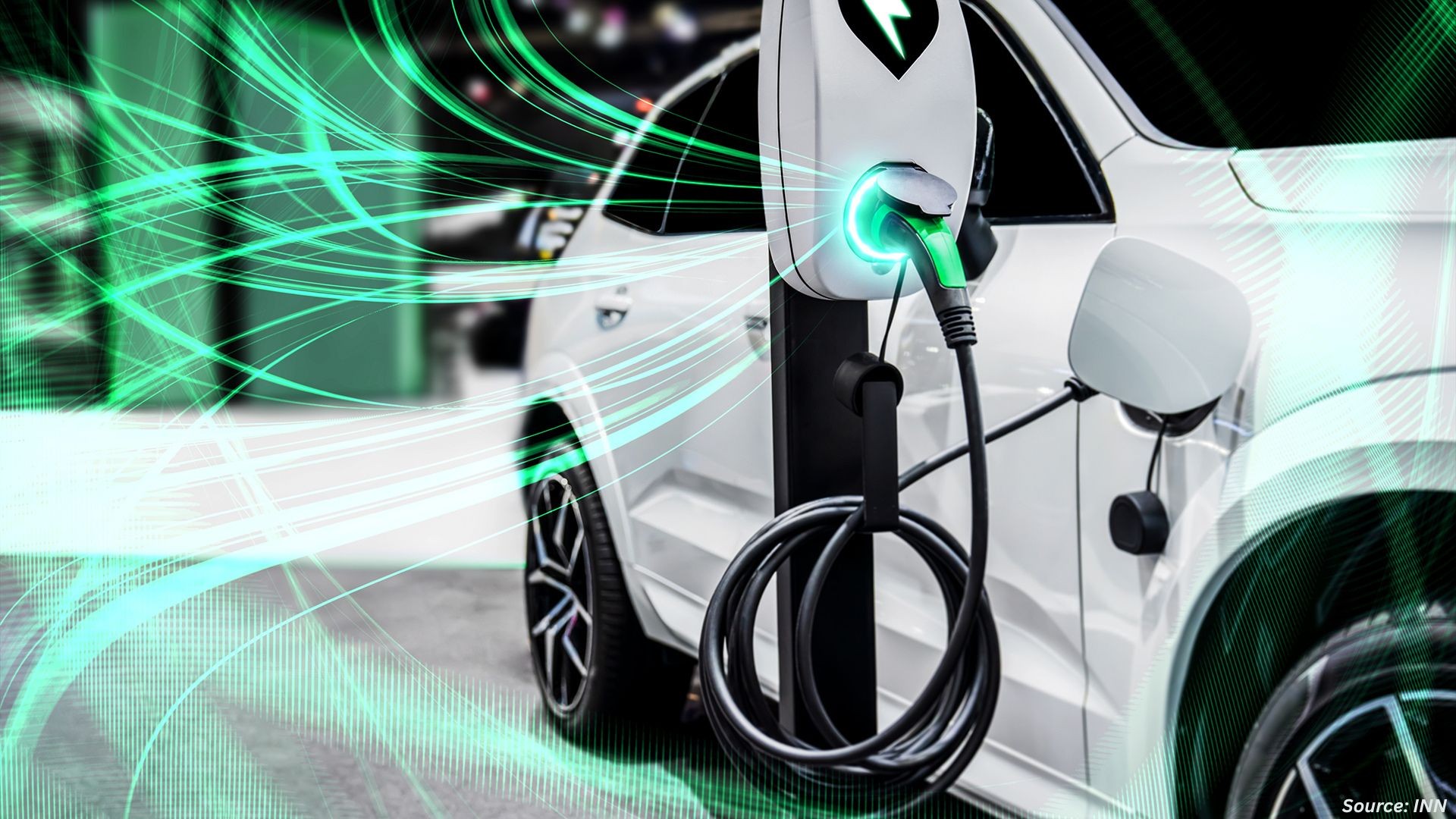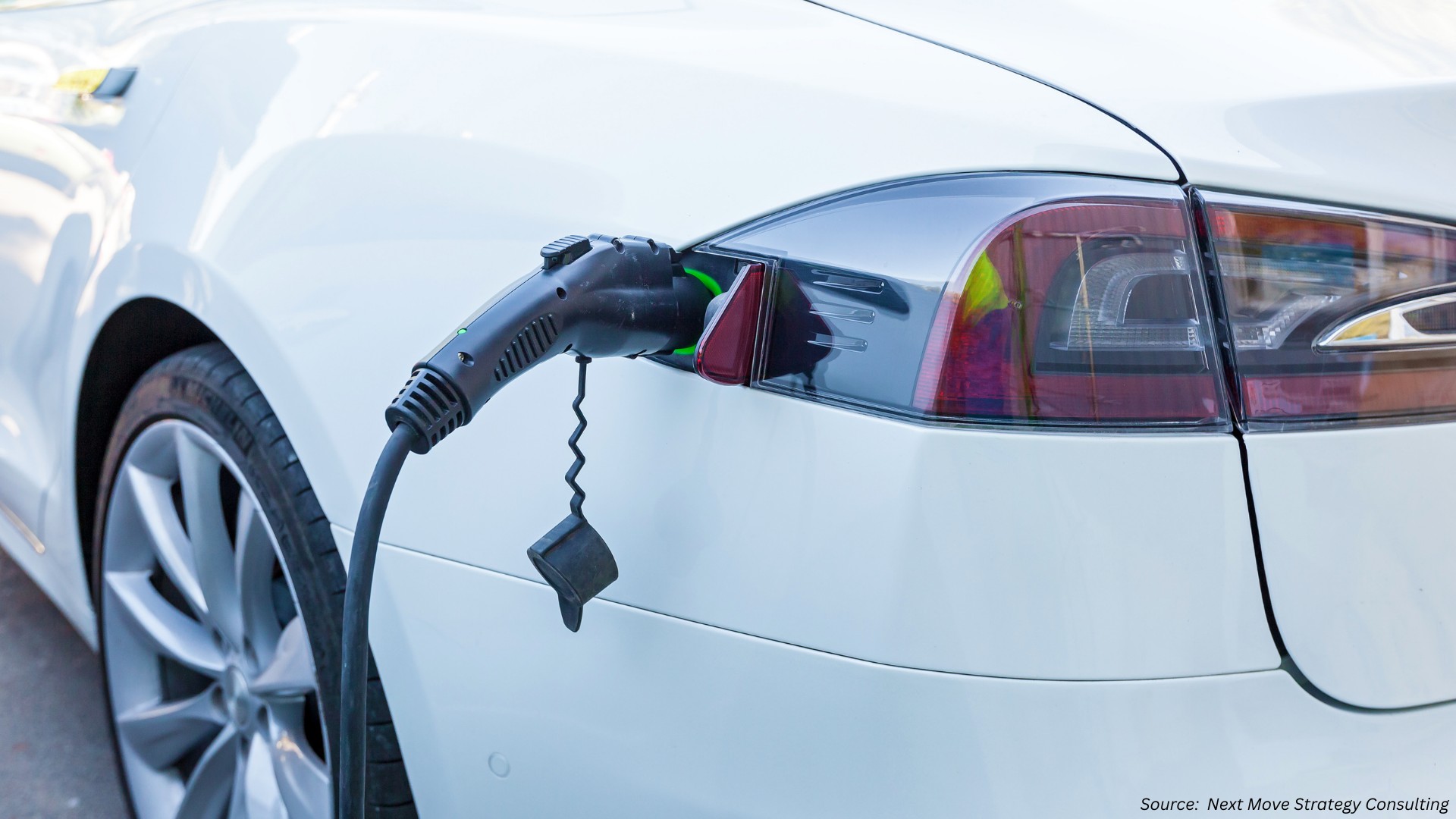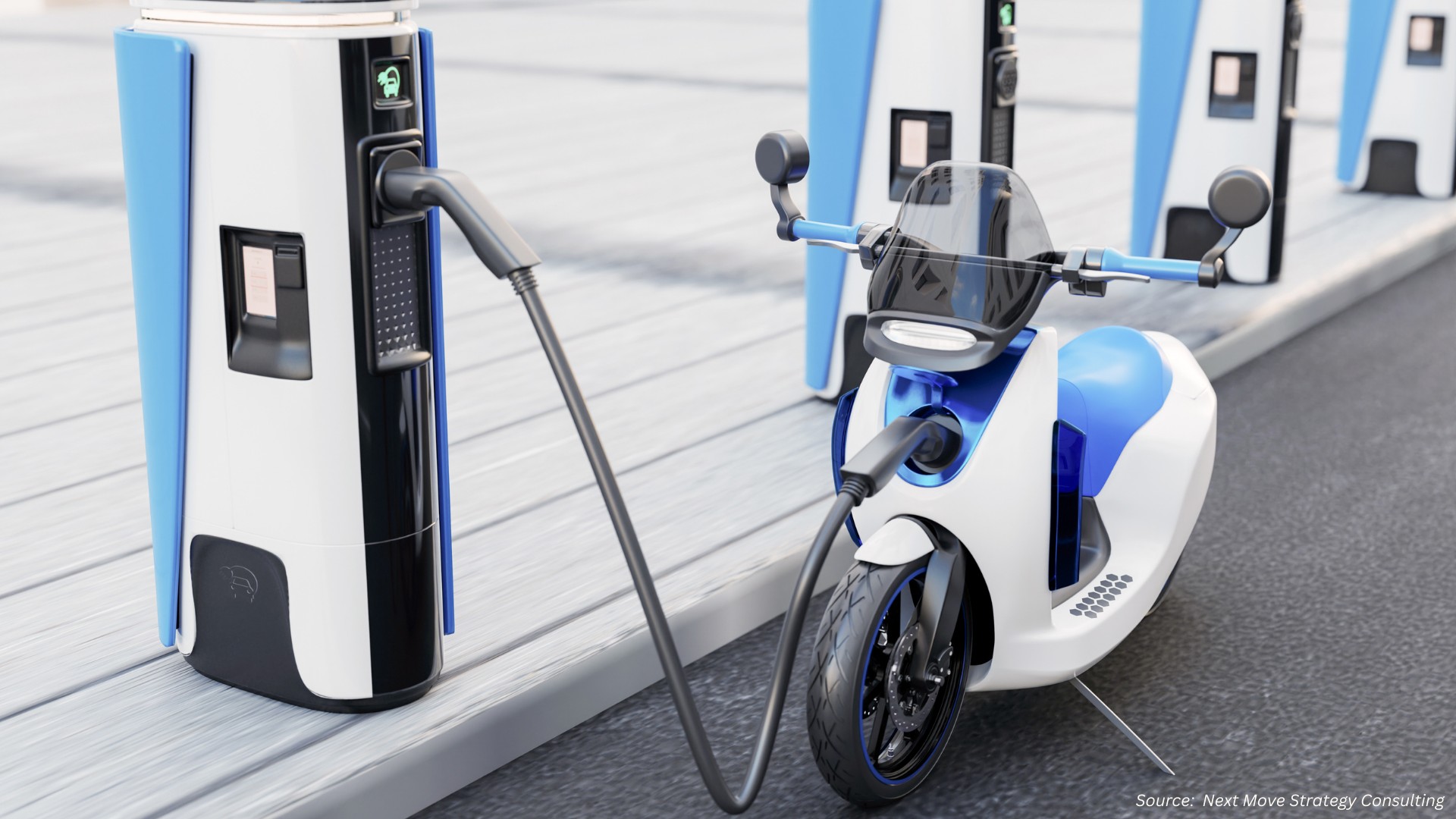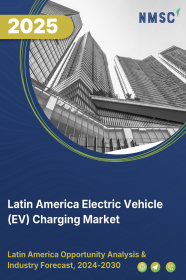
Latin America Electric Vehicle (EV) Charging Market by Type of Charger (AC Chargers, and DC Chargers), by Charging Speed (Level 1, Level 2, and Level 3), by Connector Type (Type 1, Type 2, CCS, CHAdeMO, and Others), by Installation (Fixed, and Portable), and by End User (Commercial, and Residential) – Opportunity Analysis and Industry Forecast 2024–2030.
Industry: Automotive & Transportation | Publish Date: 13-Nov-2025 | No of Pages: 290 | No. of Tables: 214 | No. of Figures: 159 | Format: PDF | Report Code : AT874
Market Definition
Latin America Electric Vehicle (EV) Charging Market was valued at USD 225.9 million in 2023, and is predicted to reach USD 1124.8 million by 2030, with a CAGR of 26.4% from 2024 to 2030. Electric vehicle chargers are characterized by the rate at which they deliver energy to the vehicle's battery. They serve as a vital infrastructure connecting plug-in electric vehicles to electrical outlets for the purpose of recharging the vehicle's battery. These chargers facilitate the charging process by supplying the necessary electrical energy to the EV's battery.
Charging stations are compatible with electric vehicles, neighborhood electric vehicles (NEVs), and plug-in hybrids, allowing them to connect to an electrical source for charging. Some charging stations come equipped with advanced functionalities such as smart meters, cellular connectivity, and network access.
The charging of EVs can be carried out through several levels of charging such as level 1, level 2, and level 3. The higher the level of charging, the faster the charging process causing more power to be delivered to the vehicle. The use of electric vehicles significantly reduces the carbon footprints released into the atmosphere, which contain toxic gas. The growing threat of carbon emissions and other harmful gases stemming from transportation has triggered the vital necessity of adopting electric vehicles.
In addition, the penetration of EV charging is high in commercial spaces as compared to residential ones. Long-distance trips would benefit from ultra-fast charging capabilities made possible by public charging infrastructure. However, EV chargers for residential spaces offer significant growth potential as they are affordable and more convenient for charging electric vehicles as compared to commercial charging stations.
Surging Demand for Electric Vehicles Drives Market Growth in Latin America
Latin America is experiencing a sharp rise in electric vehicle (EV) adoption, particularly in key markets such as Brazil and Argentina. This upward trend is driven by growing environmental awareness, rising fuel costs, and supportive government policies aimed at decarbonizing transportation. The increasing volume of EVs on the road is accelerating the demand for a robust and widespread charging infrastructure, essential for enabling long-distance travel and meeting daily urban mobility needs.
Over the past decade, consumer interest in EVs has shifted from niche to mainstream, supported by financial incentives, import duty reductions, and urban mobility reforms across the region. With more EVs entering the market, the need for scalable, reliable, and accessible charging stations has become a critical component of sustainable transportation planning. This transformation is creating significant opportunities for investment and innovation in EV infrastructure throughout Latin America.
Product Development Strategies Propel EV Charging Infrastructure Expansion in Latin America
The Latin America EV charging market is being shaped by proactive strategies centered on product innovation and technological advancement. Market participants are introducing a diverse range of charging solutions, including fast chargers, smart grid-compatible systems, and modular platforms that cater to both residential and commercial applications. These efforts are contributing to faster deployment of infrastructure and improved user experience, which are essential for supporting growing EV fleets.
The focus is also shifting toward enhancing the efficiency and interoperability of charging networks through integrated platforms and standardized systems. Companies are investing in solutions that align with international protocols and emerging trends such as dynamic load management and renewable energy integration. These strategic advancements are expected to drive long-term growth and solidify Latin America’s role in the global transition to electric mobility.
High Initial Costs of Fast Chargers Pose a Challenge to EV Charging Market Growth in Latin America
The high capital investment required for fast-charging infrastructure continues to be a major constraint on the growth of Latin America's EV charging market. In particular, Level 3 and ultra-fast chargers—which are essential for reducing charging times—entail significant upfront installation and equipment costs. This financial burden, combined with limited access to targeted subsidies in many parts of the region, discourages both public and private stakeholders from scaling high-speed charging networks.
While Level 1 and Level 2 chargers are more affordable and easier to deploy, their long charging durations (often taking several hours for a full charge) fall short of consumer expectations rooted in the rapid refueling experience of traditional vehicles. The demand for fast chargers that can replenish an EV battery in under 30 minutes is growing, yet their higher costs present a barrier for widespread adoption, especially in countries with budget-constrained mobility programs and uneven infrastructure development.
Surging Adoption of Vehicle-to-Grid (V2G) EV Charging Stations in Latin America Unlocks Promising Opportunities
Vehicle-to-Grid (V2G) technology is emerging as a transformative solution in Latin America’s evolving electric vehicle (EV) charging landscape. V2G enables bidirectional energy flow between EVs and the electrical grid, allowing vehicles to store surplus energy and feed it back into the grid when needed. This not only enhances grid stability and energy management but also creates additional value streams for EV owners, positioning electric vehicles as active components of the broader energy ecosystem.
As governments and utilities across Latin America prioritize grid modernization and renewable energy integration, V2G technology offers a strategic opportunity to support peak load management, reduce dependence on fossil fuels, and enhance overall energy resilience. The integration of V2G capabilities into public and private charging stations is expected to unlock new business models and support national sustainability targets, particularly in urban centers with growing electricity demand.
Competitive Landscape
The Latin America Electric Vehicle (EV) Charging industry includes several market players such as Leviton Manufacturing Co, TESLA, BP PLC (PULSE), ABB, EVB, EFACEC POWER SOLUTION, BLINK CHARGING CO., WALLBOX INC., EV BOX, Schneider Electric, Siemens, Enel X, Evesco, Weg S.A, Circontrol, and Others.
Latin America Electric Vehicle (EV) Charging Market Key Segments
By Type of Charger
-
AC Chargers
-
Mode 1 (2.3 kW)
-
Mode 2 (2.3 kW)
-
Mode 3 (3.7 kW to 22 kW)
-
-
DC Chargers (22 kW to 350 kW)
By Charging Speed
-
Level 1
-
Level 2
-
Level 3
By Connector Type
-
Type 1
-
Type 2
-
CCS
-
CHAdeMO
-
Others
By Installation
-
Fixed
-
Portable
By End User
-
Commercial
-
Commercial Public EV Charging Stations
-
Highway Charging Stations
-
Fleet Charging Stations
-
Workplace Charging Stations
-
-
Commercial Private EV Charging Stations
-
-
Residential
-
Private Homes
-
Apartments
-
By Region
-
Latin America
-
Brazil
-
Mexico
-
Argentina
-
Columbia
-
Chile
-
Peru
-
Other Countries
-
Key Players
-
Leviton Manufacturing Co
-
TESLA
-
BP PLC (PULSE)
-
ABB
-
EVB
-
EFACEC POWER SOLUTION
-
BLINK CHARGING CO.
-
WALLBOX INC.
-
EV BOX
-
Schneider Electric
-
Siemens
-
Enel X
-
Evesco
-
Weg S.A
-
Circontrol
Report Scope and Segmentation
|
Parameters |
Details |
|
Market Size in 2023 |
USD 225.9 Million |
|
Revenue Forecast in 2030 |
USD 1124.8 Million |
|
Growth Rate |
CAGR of 26.4% from 2024 to 2030 |
|
Analysis Period |
2023–2030 |
|
Base Year Considered |
2023 |
|
Forecast Period |
2024–2030 |
|
Market Size Estimation |
Million (USD) |
|
Growth Factors |
Surging Demand for Electric Vehicles Drives Market Growth in Latin America Product Development Strategies Propel EV Charging Infrastructure Expansion in Latin America |
|
Companies Profiled |
15 |
|
Market Share |
Available for 10 companies |
|
Customization Scope |
Free customization (equivalent up to 80 working hours of analysts) after purchase. Addition or alteration to country, regional, and segment scope. |
|
Pricing and Purchase Options |
Avail customized purchase options to meet your exact research needs. |

















 Speak to Our Analyst
Speak to Our Analyst



